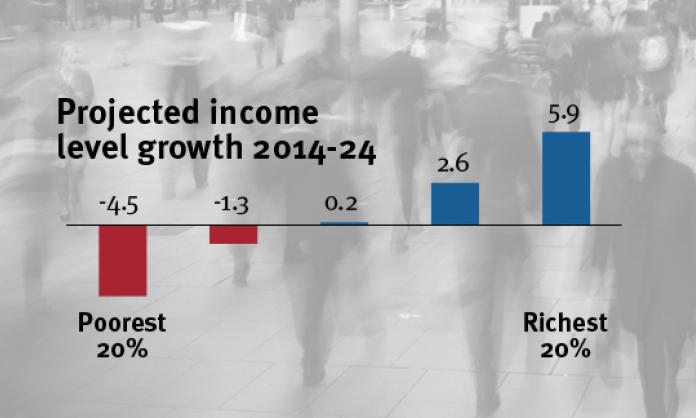Two in five Australian households face declining living standards over the next decade, according to research carried out by the National Centre for Social and Economic Modelling on behalf of Anglicare.
The research, published in the State of the family report 2015, shows that the poorest are heaviest hit by increases in the cost of living. As a result, low income households have been falling behind the rest of the country, even though their real incomes have been rising.
“Households in the bottom 20 percent of incomes experienced a 15.1 percent increase in their living standards [over the last decade] while the top 20 percent enjoyed growth of 28.4 percent”, the report says. “Clearly, higher income groups have experienced significantly stronger gains in living standards compared to lower income groups.”
But now, the researchers say, “Australia is on track to deliver a fall in average living standards for the 40 percent of households with the lowest incomes. While those with the highest standard of living can probably expect their living standards to rise further”.
Inequality in Australia is already at historic highs. Economists Andrew Leigh and Anthony Atkinson estimate that the income share of the richest 10 percent of the population was higher at the turn of the 21st century than 50 years earlier.
A demographic shift is also occurring. The Anglicare report describes older single women as “the changing face of homelessness”. Women, Aboriginal people, the elderly, the very young and people with disabilities are all over-represented in homelessness and poverty statistics.




